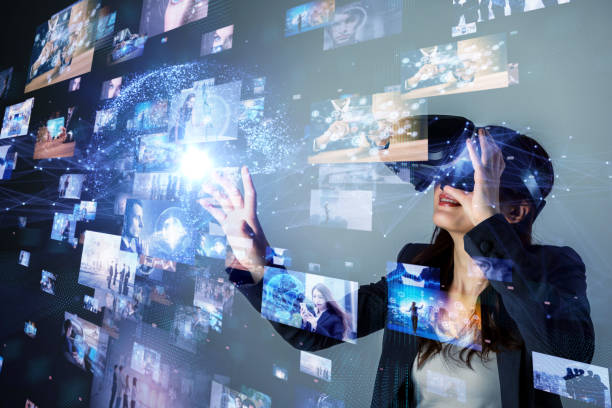- Get link
- X
- Other Apps
- Get link
- X
- Other Apps
Virtual Reality (VR) 2025 Complete Guide: Immersive Worlds + Metaverse Revolution
VR market explodes to $87B in 2025, powering metaverse twins, 5G streaming, and zero-risk surgery training. Unlike AR's overlays, VR creates total immersion—your 2800+ word roadmap starts here.
VR vs AR vs MR: The Immersion Spectrum
| Technology | Immersion Level | Devices | 2025 Killer App |
|---|---|---|---|
| VR | 100% Virtual | Quest 4, PSVR3, Apple Vision | Factory simulations |
| AR | Real + Digital | Smartphones, Ray-Ban Meta | Remote assistance |
| Mixed Reality | Interactive hybrid | HoloLens 3, Vision Pro | Spatial collaboration |
VR Technical Stack (2025)
- Display: 4K per eye, 120Hz, pancake lenses (50% thinner)
- Tracking: 6DoF inside-out, eye + face tracking standard
- Audio: 3D spatial audio with head-related transfer functions
- Haptics: Full-body suits, finger tracking gloves
- Networking: 5G wireless streaming (100ms latency)
15 VR Applications Dominating 2025
- Surgery Training: AI-guided procedures, 75% faster skill acquisition
- Aviation Simulators: Zero-risk emergency training
- Military: Combat scenarios with robotic integration
- EV Design: Full-scale vehicle prototyping
- Architecture: Walkthrough unbuilt skyscrapers
- PTSD Therapy: Exposure therapy success rate 68%
- Metaverse Work: Holographic digital twin meetings
VR Hardware Evolution 2025-2030
| Year | Device | Key Specs | Price |
|---|---|---|---|
| 2025 | Quest 4 | 4K/eye, 140° FOV, wireless | $499 |
| 2026 | PSVR3 | 8K, foveated rendering | $399 |
| 2027 | Apple Vision 2 | Eye-tracking, M3 chip | $999 |
| 2030 | Neuralink VR | Brain-computer interface | $2K |
VR Development Platforms (Build Yours)
- Unreal Engine 5.3: Nanite + Lumen for photoreal VR
- Unity XR: Cross-platform (Quest, PSVR, PC)
- OpenXR: Universal VR standard
- Roblox Studio: GenAI metaverse builder
- WebXR: Browser-based VR (no downloads)
VR 2025 Trends: Game-Changers
- Social VR: 500M monthly users (Horizon Worlds)
- Foveated Rendering: Eye-tracking saves 70% GPU
- Full-Body Avatars: IoT motion capture
- Hand Tracking: Controller-free interaction
- Passthrough MR: Blends real + virtual seamlessly
- Cloud VR: Edge streaming ($200 headsets)
VR Business ROI: Real Numbers
- Walmart VR Training: 10-15% productivity boost, $100M savings
- Boeing VR Assembly: 90% error reduction
- Northwestern Medicine: 230% surgery speed increase
- UPS VR Delivery: 12% fuel savings via route simulation
- Meta Horizon: 300K daily active enterprises
VR + Your Tech Ecosystem
VR supercharges your cluster:
- Quantum VR rendering
- NASA astronaut training
- Nano-scale VR visualization
- Haptic smart fabrics
- Drone operator VR
Get VR Ready: Action Plan
- Buy Quest 3S ($299 entry point)
- Download Unity XR Interaction Toolkit
- Build smart home VR tour
- Test enterprise training demo
- Monitor Apple Vision Pro 2 (Q3 2025)
Conclusion: VR = The Ultimate Simulator
VR transcends gaming—it's your Industry 5.0 trainer, healthcare revolution, and 5G metaverse gateway. Which VR world will you build first?
augmented reality vs virtual reality
virtual reality
virtual reality headset
what are the most important benefits of using virtual reality in business training?
what is virtual reality
- Get link
- X
- Other Apps


Comments
Post a Comment